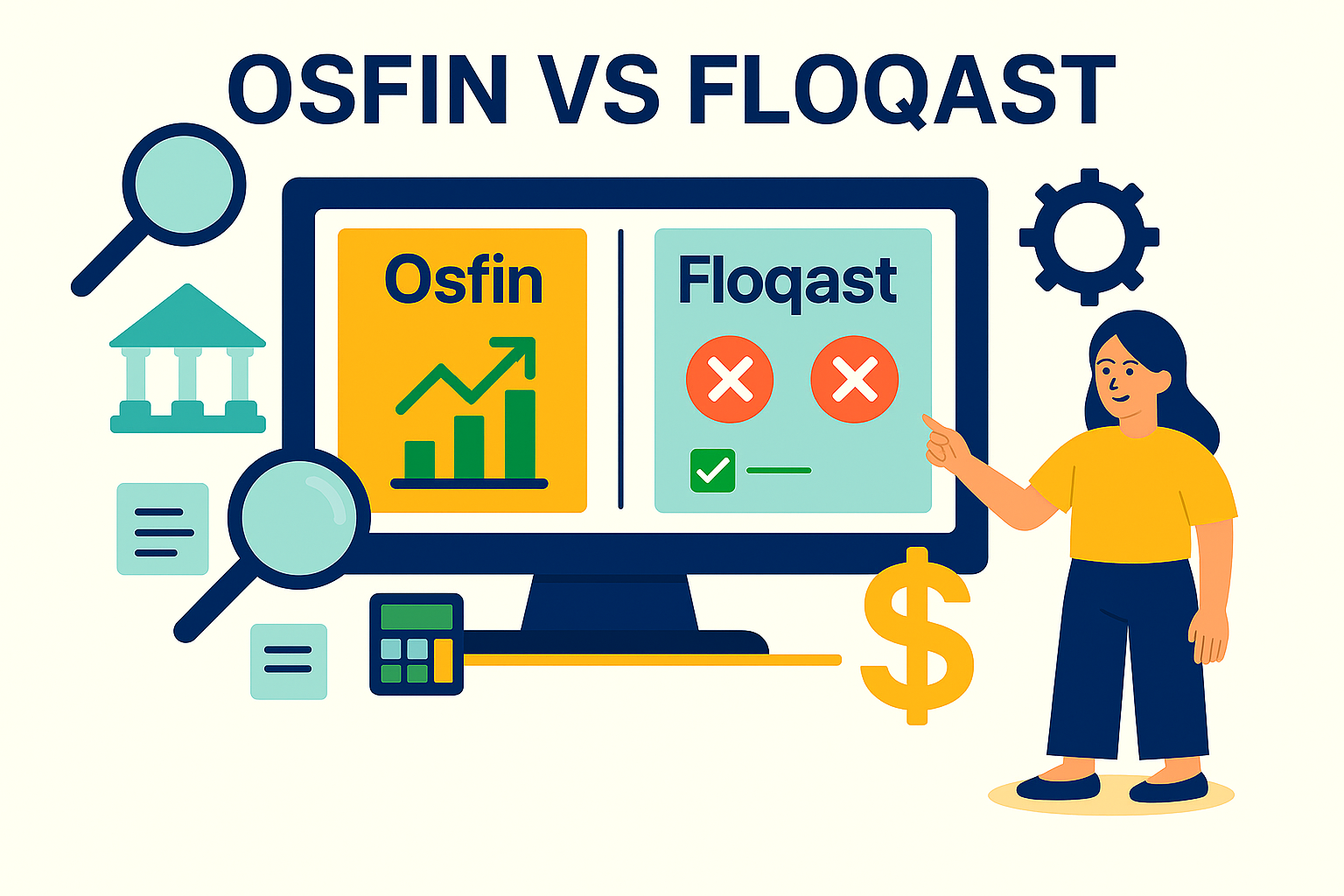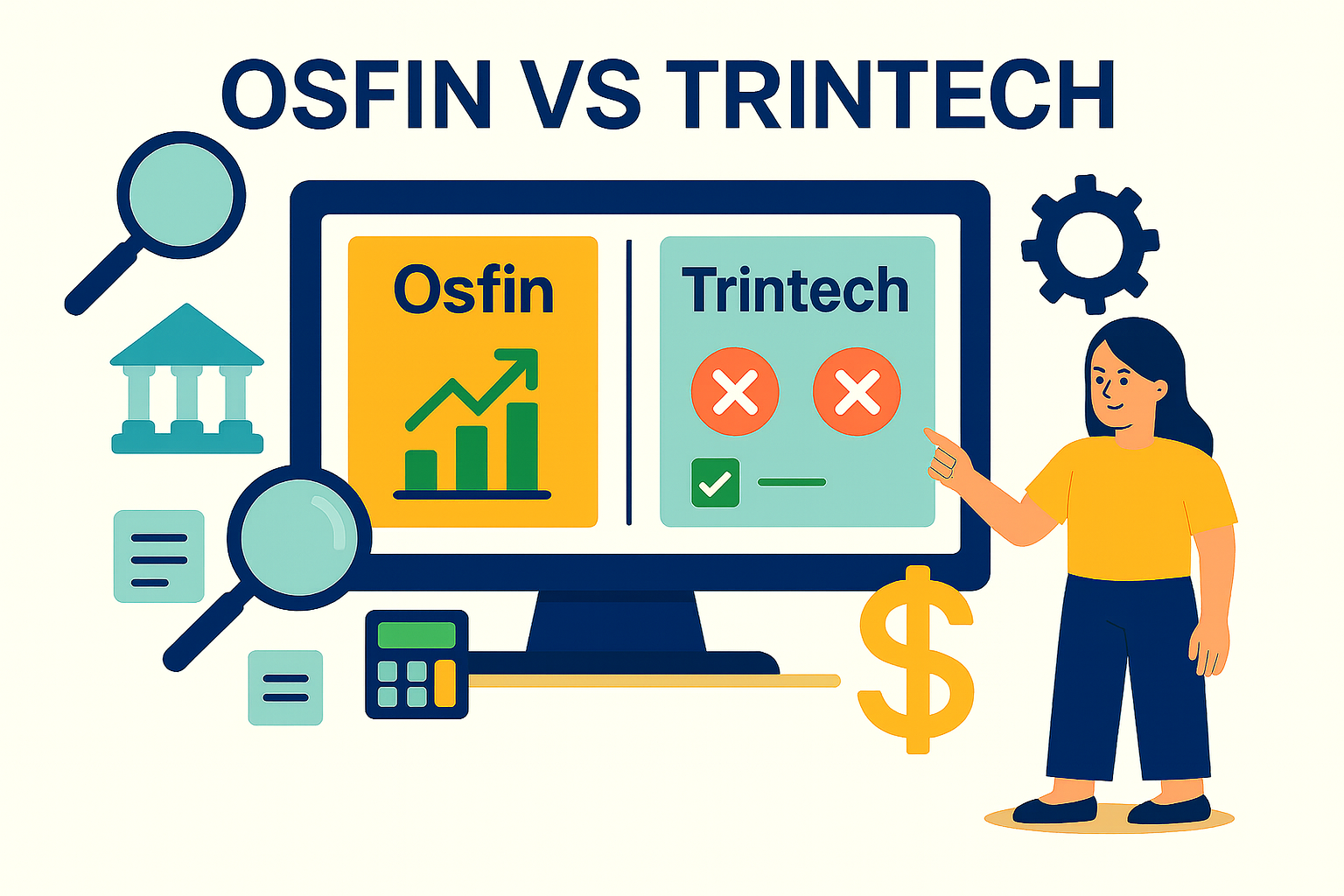Instant ACH Transfers Explained: Speed, Cost & Setup
In today’s digital-first economy, both businesses and individuals expect to move money as quickly as possible. Waiting days for funds to clear can slow operations, create cash flow challenges, and frustrate customers who are used to instant online transactions. Speed has become a competitive advantage, and payment systems have had to evolve to meet that demand.
The Automated Clearing House (ACH) network has been a cornerstone of U.S. payment processing for decades. Traditionally, ACH transactions are processed in batches, with settlement taking one to three business days. While these are secure and cost-effective, this batch-based system can delay access to funds.
As payment technology advanced, so did the need for faster clearing. This led to the introduction of Same Day ACH or Instant ACH options. These methods dramatically reduce settlement times while maintaining the ACH network’s reliability.
In this article, we explain what Instant ACH transfers are, how they work, the benefits they bring, and why reconciliation is critical for managing them effectively.
What this blog covers:
- What instant ACH transfers are and how they accelerate fund movements
- How the ACH network processes instant transfers and the role of same-day settlement windows
- Key benefits of instant ACH: faster access to funds, improved cash flow, cost-effectiveness
- Common challenges: higher fees, fraud risk, limited bank participation
- Why reconciliation is critical for instant ACH given compressed settlement timelines
- How Osfin’s automation supports instant ACH reconciliation and financial control
What are Instant ACH Transfers?
Instant ACH transfers, referred to as Same Day ACH under NACHA’s rules, allow payments to be processed and settled much faster than standard ACH transactions. Instead of waiting one to three business days, eligible transactions can post and be available on the same day they are initiated.
Despite the term “instant,” these transfers are not literally real-time. They are processed within expanded same-day settlement windows, meaning the funds typically become available within hours rather than seconds. This accelerated timeline is a major improvement for businesses and consumers needing faster access to money.
Instant ACH services are available through many banks, credit unions, and payment processors that participate in the ACH network and comply with NACHA’s Same Day ACH standards. Availability depends on whether both the sending and receiving institutions support same-day processing.
How Instant ACH Sends Money Faster than Regular ACH Transfers
Standard ACH processing relies on a small number of daily settlement windows, which means payments may not move until the next processing cycle. Instant ACH expands this by adding multiple same-day settlement windows, allowing payments to be cleared and posted several times throughout the day.
To work, both the sending and receiving financial institutions must participate in Same Day ACH. When they do, funds can be credited and made available much more quickly than with traditional ACH processing.
How Instant ACH Transfers Work
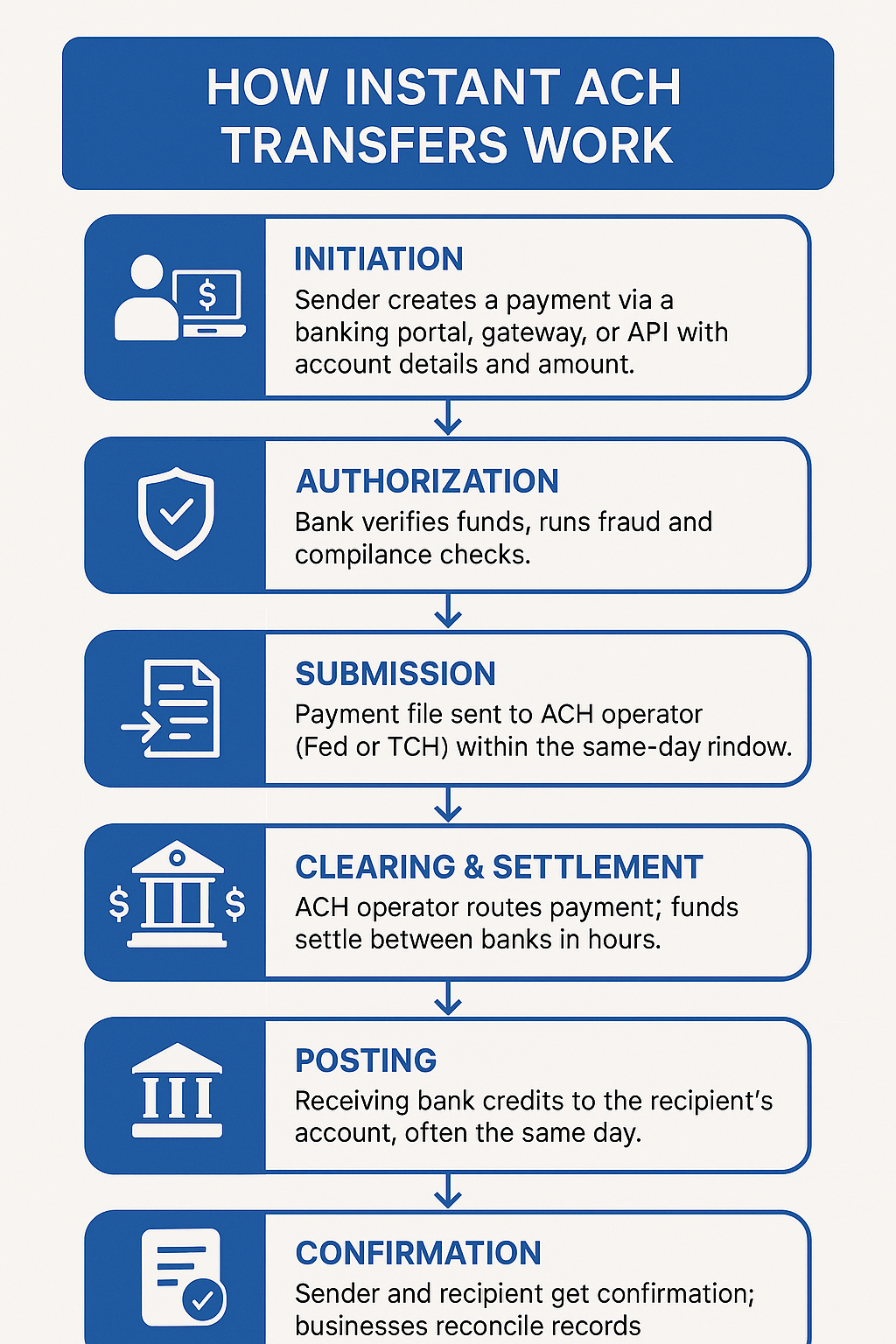
While Instant ACH transfers are designed to speed up the availability of funds, they still follow a clear, regulated process. Here is how the ACH transfer workflow looks:
Step 1: Transaction Initiation
The process begins when the sender, either an individual or a business, initiates a payment through their bank’s online portal, a payment gateway, or via API integration in the case of automated systems.
To create the payment instruction, the sender must provide key details such as the recipient’s account number, routing number, payment amount, and, in some cases, a purpose code that describes the transaction type.
Step 2: Bank Authorization & Data Validation
Once the payment request has been submitted, the sender’s bank verifies the account’s standing, checks that sufficient funds are available in the sender's account, and confirms that the transaction meets eligibility for same-day processing.
This stage is also where compliance and fraud prevention controls are applied. The bank’s system runs the details through internal and external watchlists, performs KYC (Know Your Customer) checks, and flags any anomalies in transaction patterns.
Step 3: Submission to ACH Operator
After passing the bank’s internal checks, the payment file is formatted according to NACHA standards and transmitted to the ACH operator. In the United States, there are two ACH operators, they are The Federal Reserve and The Clearing House.
For instant ACH, the transaction must be sent within one of the multiple same-day settlement windows offered under NACHA’s rules. If the transaction misses the cutoff, it may fall into the next available same-day window or revert to standard ACH timing.
Step 4: Clearing & Settlement
The ACH operator aggregates all eligible same-day transactions and then routes them to the appropriate receiving financial institutions. Unlike traditional ACH, where settlement may take one to three business days, Instant ACH moves to settlement within hours.
Settlement between banks takes place via the National Settlement Service (NSS), ensuring funds are moved securely from the sender’s bank to the recipient’s bank. This step also involves clearing the transaction, meaning that both parties’ institutions agree on the transaction details before finalizing.
Step 5: Receiving Bank Posting
Once the receiving bank gets the payment file from the ACH operator, it applies the credit to the recipient’s account. Posting times vary by institution. Some banks make funds available within minutes of receiving them, while others may require additional internal checks, meaning the funds are posted later the same day.
Step 6: Confirmation
After the funds are posted, both the sender and the recipient are notified. If discrepancies appear, they must be addressed quickly due to the compressed timeline of same-day settlement.
What are the Benefits of Instant ACH Transfers?
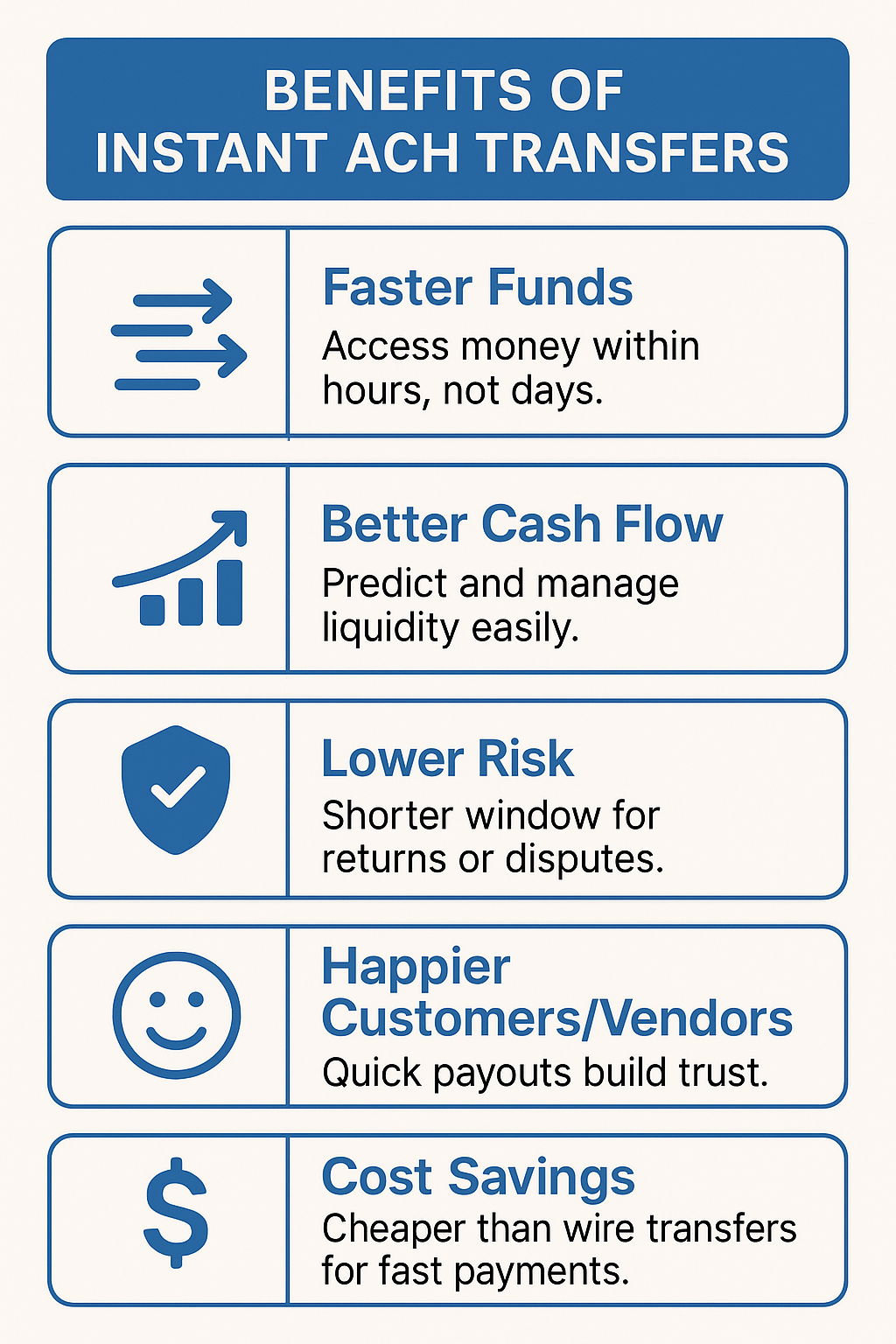
Instant ACH transfers give both businesses and individuals faster access to funds without sacrificing the security and cost-effectiveness of traditional ACH payments.
While the speed is the most visible change, the advantages of instant ACH extend to impacting cash flow, payment flexibility, and customer satisfaction. Here are the key benefits that make Instant ACH a valuable payment option:
1. Faster Access to Funds
Same-day processing allows recipients to access money within hours instead of waiting one to three business days. This helps businesses cover urgent expenses, meet payroll deadlines, or process time-sensitive supplier payments without delay.
2. Improved Cash Flow Management
Shorter settlement times mean businesses can predict and manage liquidity more effectively. Immediate access to incoming funds helps reduce the need for short-term borrowing and supports better budgeting.
3. Reduced Payment Risk
Faster settlement shortens the window for potential returns or disputes, lowering the risk of delays caused by returned items. This is particularly useful for high-value or time-critical transactions.
4. Better Customer and Vendor Experience
Quick payouts such as same-day refunds, insurance claim settlements, or vendor payments improve satisfaction and strengthen relationships. In competitive markets, this speed can be a key differentiator.
5. Cost Efficiency Compared to Wire Transfers
Instant ACH often costs less than wire transfers while still delivering rapid processing. This makes it an attractive option for high-volume, same-day transactions where wire fees would add up.
Banks and Providers Offering Instant ACH Transfers
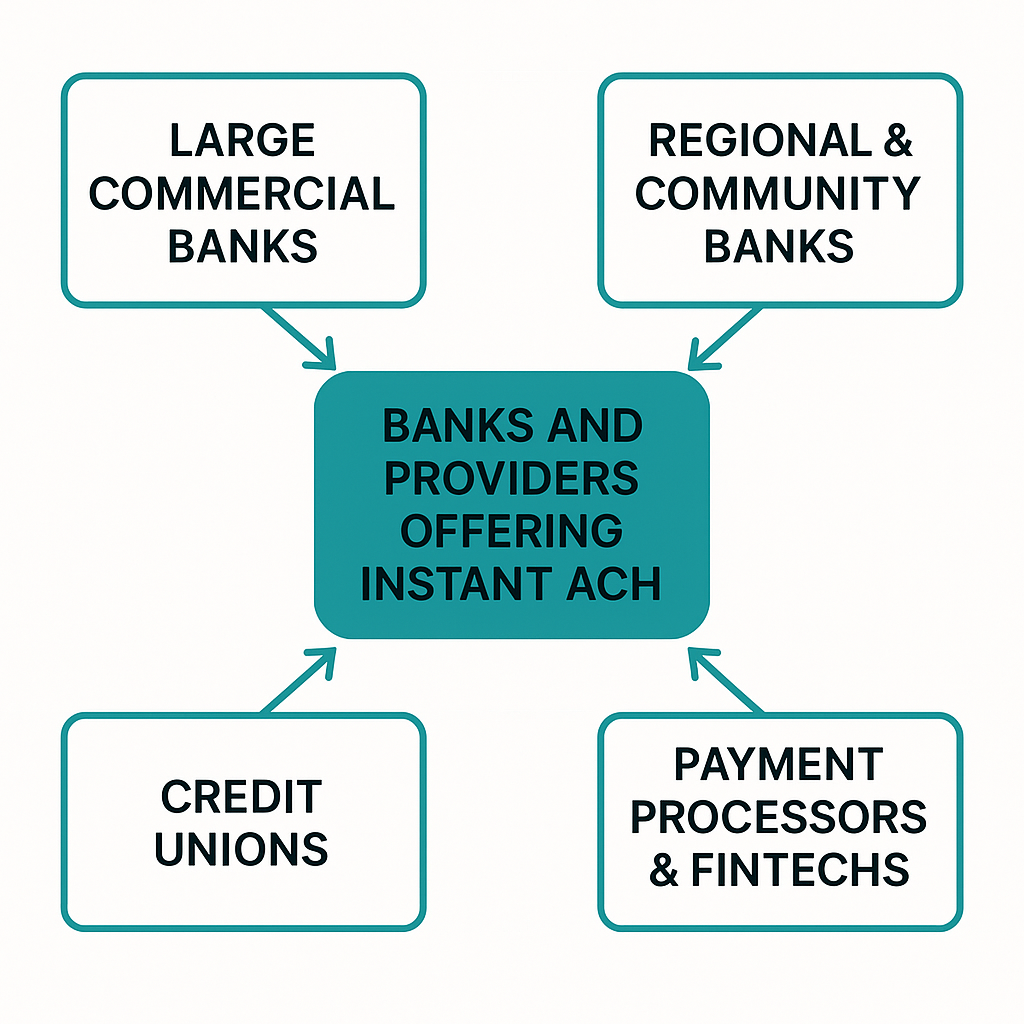
Instant ACH is widely available but not universally supported. Its availability depends on whether both the sending and receiving financial institutions participate in NACHA’s Same Day ACH program and have systems equipped for same-day processing. Its adoption has grown steadily as businesses and consumers demand faster payment options.
Here are the institutions that offer same-day ACH transfers:
1. Large Commercial Banks
Many leading U.S. banks, such as JPMorgan Chase, Bank of America, and more, provide Instant ACH capabilities. These institutions often integrate same-day ACH into their business banking platforms and make it accessible for corporate payments, payroll, and vendor transactions.
2. Regional and Community Banks
Smaller banks are increasingly offering Instant ACH through upgrades to their core banking systems or partnerships with payment processors. While their coverage may be more limited than that of national banks, they often provide competitive pricing and personalized service.
3. Credit Unions
Credit unions have been quick to adopt same-day ACH to meet member expectations for faster transactions. Their cooperative structure often allows them to roll out these services quickly once system upgrades are in place.
4. Payment Processors and Fintechs
Companies like Stripe, Square, and PayPal incorporate Instant ACH into their payout services, enabling businesses to send funds quickly without relying solely on traditional banking portals. These providers often serve industries that require rapid payments, such as e-commerce, gig work, and insurance claims.
Why Reconciliation Matters for Instant ACH Transfers
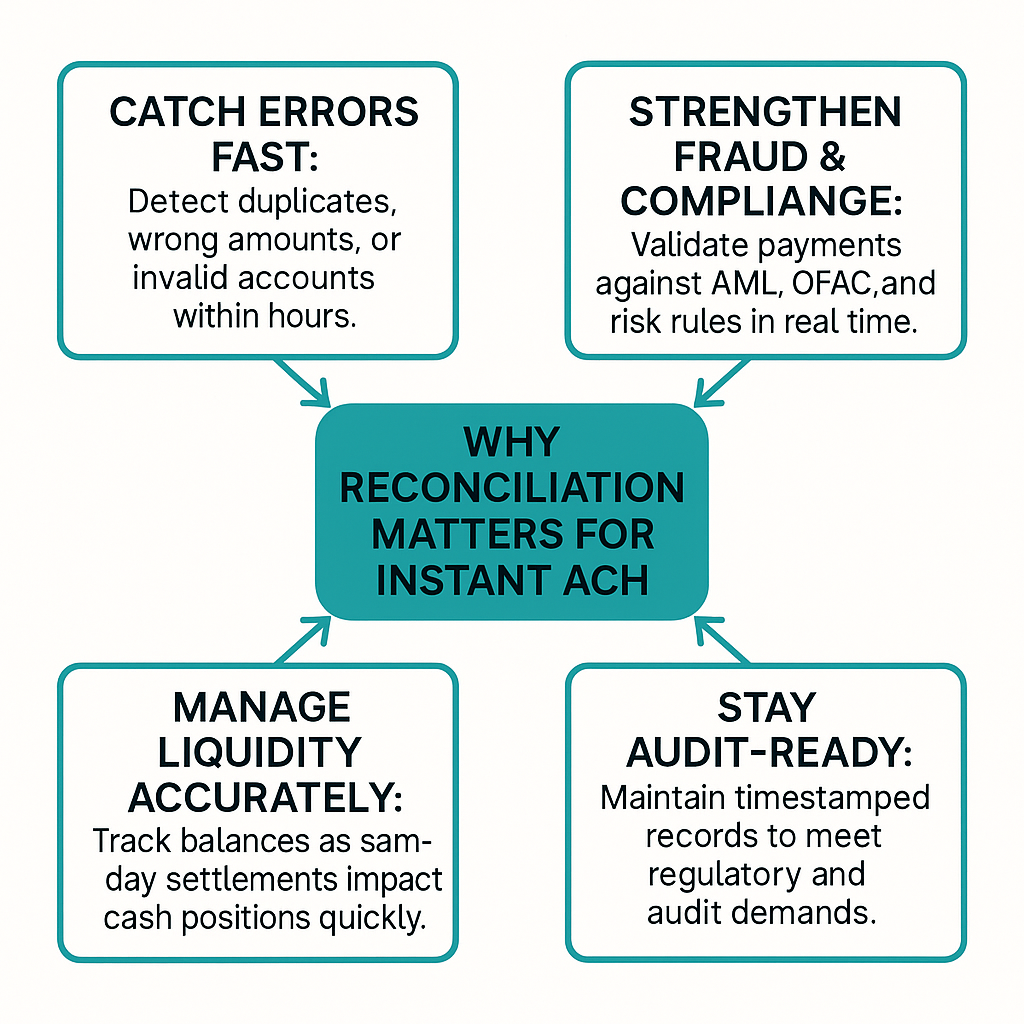
Instant ACH transfers speed up the movement of funds, but this acceleration also shortens the time available to detect errors, confirm transaction accuracy, and meet regulatory requirements.
For financial institutions that facilitate these payments, reconciliation becomes not just a back-office process but a critical operational control. Without timely reconciliation, institutions risk undetected mismatches, compliance breaches, and liquidity gaps, issues that are harder to correct in a same-day settlement environment.
Here’s why reconciliation matters for banks that facilitate instant ACH transfers:
1. Real-Time Error and Exception Detection
In standard ACH, a one-to-three-day settlement window allows time to identify and resolve errors before funds are fully posted. Instant ACH compresses that window to hours, meaning discrepancies such as duplicate transactions, incorrect amounts, or invalid account numbers must be flagged almost immediately.
Real-time reconciliation ensures these issues are detected and routed for resolution before they cause downstream problems.
{{banner1}}
2. Fraud and Compliance Monitoring
Faster settlement reduces the buffer for fraud detection. Financial institutions need reconciliation processes that validate every transaction against anti-money laundering (AML) rules, OFAC lists, and internal risk parameters in near real time. This prevents unauthorized payments from slipping through and ensures compliance with NACHA and federal regulations.
3. Accurate Liquidity Management
Same-day ACH impacts liquidity positions more quickly than standard processing. Without precise reconciliation, institutions may misjudge available balances in settlement accounts, risking overdrafts or missed funding obligations. Reconciling transactions as they clear helps maintain accurate cash positions throughout the day.
4. Audit-Ready Recordkeeping
Regulators and auditors may request proof of same-day postings and error resolution timelines. Detailed, timestamped reconciliation records provide the necessary evidence to demonstrate compliance and operational control, reducing the risk of penalties.
5. Customer Confidence and Service Quality
Lastly, for businesses relying on financial institutions to process urgent payments, errors in same-day transfers can damage relationships and trust. Accurate reconciliation ensures clients receive correct postings and confirmations, reinforcing the institution’s reliability.
How Osfin Supports Instant ACH Reconciliation
For financial institutions, the speed of Instant ACH transfers leaves little room for manual reconciliation delays. Osfin streamlines this process end-to-end, helping teams manage high transaction volumes, identify discrepancies quickly, and maintain compliance without slowing down same-day settlements.
The platform is designed to work seamlessly across payment and financial reconciliation workflows, ensuring every transaction is validated, matched, and recorded accurately.
1. Ingesting Data: Osfin is a file-format agnostic platform, meaning it can ingest and process data in any structure or format, such as Excel, CSV, JSON, XML, or MT940, without requiring manual reformatting. It offers 170+ integrations, enabling institutions to ingest data from payment processors, gateways, and internal platforms with ease. During ingestion, it applies custom deviation tolerances to filter out poor-quality records and detects duplicates or outliers immediately to prevent downstream issues.
2. Reconciliation Process: The platform uses logic-based matching that can manage one-to-many and many-to-one transaction scenarios. It can reconcile up to 30 million records in 15 minutes and automatically reconcile payment gateway reports, including commission, tax, and fee breakdowns.
3. Exception Handling: Any transactions that cannot be matched are automatically flagged with precise reason codes. These are then routed to the appropriate team members for resolution, while live dashboards give teams real-time visibility into match status, exposure, and exception queues.
4. Output: Once reconciliation is complete, Osfin generates intuitive reports, dashboards and compliance-ready reports and preserves complete transaction traceability with a full audit history. All data is protected with 256-bit encryption, role-based access controls, and two-factor authentication, while meeting SOC 2, PCI DSS, ISO 27001, and GDPR compliance requirements.
{{banner1.1}}
FAQs on ACH Transfer Instant
1. Is an ACH transfer instant?
No, a standard ACH transfer is not instant. It typically takes one to three business days for funds to settle. However, Instant ACH or Same Day ACH enables eligible transactions to clear and post within the same day.
2. Who accepts ACH payments online?
Many businesses accept ACH payments online, including utilities, insurance providers, lenders, subscription services, and e-commerce platforms. Payment processors and gateways integrated with the ACH network enable these businesses to receive bank-to-bank payments directly from customers.
3. How do instant ACH transfers send money faster?
Instant ACH transfers use additional same-day settlement windows established by NACHA. This allows payments to be processed and sent to receiving banks multiple times during the day, significantly reducing the delay seen in standard ACH processing.
4. What is the difference between Same Day ACH and Instant ACH?
Same Day ACH is the NACHA-standard service allowing funds to be credited within the same business day. “Instant ACH” is an industry term often used for the same capability.
5. Are instant ACH transfers available on weekends and holidays?
No, Instant ACH transfers follow NACHA’s operating schedule and are only processed on business days. Transactions initiated on weekends or federal holidays are queued for the next available same-day processing window during the business week.
